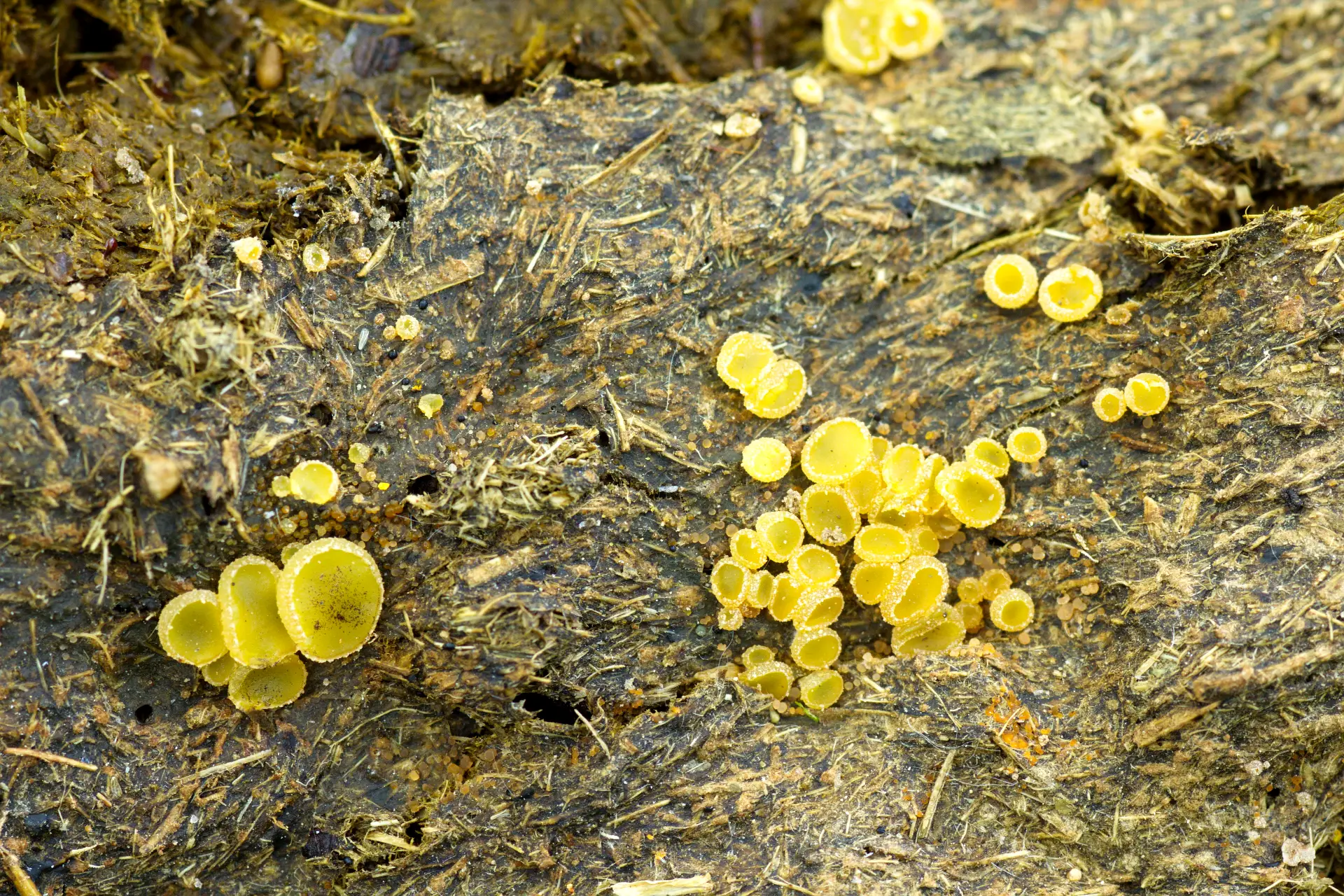Contents
ASCOBOLUS
CLASSIFICATION OF ASCOBOLUS
Kingdom :- Mycota
Division :- Eumycota
Sub-division :- Ascomycotina
Class :- Discomycetes
Order :- Pezizales
Family :- Pezizaceae
Genus :- Ascobolus
Ascobolus are seen growing on dung and on decaying wood, in damp places in rainy season.
STUDY OF VEGETATIVE STRUCTURE
- The fungus mostly grows on the dung of herbivores and is called coprophilous. A few species (A. carbonarius) grow on burnt soils.
- The thallus is made of richly branched mycelium that forms a complex structure and finally a cup shaped structure.
- The hyphal masses penetrate the substratum. These act as organs of absorption for the aerial branches.
- The hyphae are branched and septate. Each cell is multinucleate.

SEXUAL REPRODUCTIVE STRUCTURES
- The male reproductive organs are antheridia and the female reproductive organs are called ascogonia.
- Antheridia and ascogonia are borne at the tips of separate branches.
- Antheridium is borne at the tip of antheridial branch. It is cylindrical or clavate in shape.
- Each antheridium is multinucleate.
- Ascogonium is also present at the tip of the ascogonial branch. It is sub-globose in shape and is multinucleate.
- The tip of ascogonium is drawn into a long and terminal organ called trichogyne. It reaches the tip of an antheridium.

ASCOCARP, ASCI AND ASCOSPORES
- The ascocarps are apothecia and develop as a result of fertilization.
- These are yellowish and saucer shaped.
- Apothecium is a cup-shaped structure that is made of mycelium.
- The section shows three zones-the outermost called hymenium, the middle called sub-hymenium and the lowermost called hypothecium.
- The lowermost hypothecium, is made of sterile hyphae, loosely packed to form pseudoparenchymatous region called trama.
- The middle zone consist of a few erect hyphae. ‘This later merges with hymenial layer which is called sub-hymenium.
- The hymenium consists of asci intermingled with paraphyses.
- The asci elongate on maturation to protrude above the hymenial surface. These are found mixed with paraphyses. Ascus is a long and cylindrical structure. It opens by a terminal pore called operculum.
- Each ascus contains eight ascospores. Ascospore is one celled, large in diameter, purple or dark brown and the spore wall shows longitudinal colourless striations.

IDENTIFICATION
- KINGDOM – Mycota
- Chlorophyll absent
- Reserve food glycogen
- Cell wall of fungal cellulose.
- DIVISION – Eumycota
- A definite cell wall present.
- SUB-DIVISION :- Ascomycotina
- Mycelium septate.
- Spores borne endogenously in the ascus.
- Spores in definite numbers, in multiples of two, usually eight.
- CLASS :- Discomycetes
- Ascocarp, an apothecium.
- ORDER – Pezizales
- Apothecia fleshy or leathery.
- Apothecia usually not in stroma.
- FAMILY – Pezizaceae
- Apothecia cup-shaped or discoid.
- apothecia not differentiated into stipe and pileus.
- GENUS – Ascobolus
- Apothecia upto 5 mm in diameter.
- Apothecia saucer-shaped and growing on dung.
REFERENCES


Leave a Reply